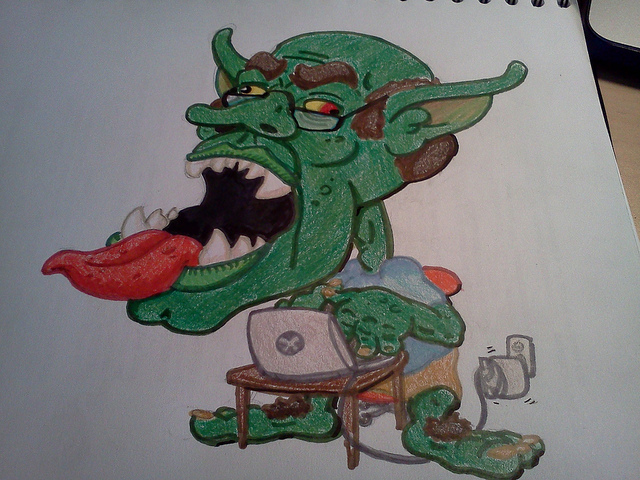Many American journalists are confused about copyright law in the United States, leading to the publication of weak or substandard content, according to a new study.
A team of researchers led by Patricia Aufderheide, a professor of communication studies at American University’s School of Communication, examined how new challenges evolving within the digital era, particularly the challenge of handling protected material, affects journalists’ work.
The study “Copyright, free speech and the public’s right to know,” focused on copyright law in the US. There are several paradoxes: On the one hand there are many exceptions for journalists concerning copyright restrictions, while on the other hand many companies, especially record-labels and film-studios, have recently built huge networks of strict copyright law.
“Journalists encounter a world that is now almost seamlessly copyrighted,” say the study’s authors. This leads to increasing insecurity regarding the correct use of material and the validity of fair use for journalists. Despite the fact that American journalists enjoy broader rights than their colleagues in other countries – for example within the European Union –journalists in doubt typically cut content instead of risking high fines.
To learn more about how journalists deal with copyright restrictions in their daily working-routine, Aufderheide and her team interviewed 82 journalists working for digital news outlets in the US. 20 of these journalists worked for online media outlets, 26 administered the online section of a print outlet, 23 worked for broadcasting companies (15 in radio, 8 for television), and 11 others worked as freelancers (some interviewees declared more than one activity).
Despite its potential value, most of the journalists interviewed did not know about the US Doctrine of Fair use, which is an exception written into the Copyright Act of 1976 (§107). According to the results of the study, as a result of journalists’ lack of awareness, their work often suffered.
According to the fair use doctrine, protected content can be used whenever the public can profit educationally from its publication, when it serves political discussions, or when it promotes community welfare by describing new inventions. In short, the public value created by the use of the material should outweigh or at least balance the loss of value by the owner of the content as a consequence of its publication.
Additionally, the study revealed that most journalists were confused about the fair use doctrine, with many assuming that other rules granted them advanced access to information, just because of their profession as journalists. Others assumed that governmental papers and press releases by NGOs, in which analysis is communicated, was always free and never protected.
The scientists also found that such knowledge gaps can provoke heavy infringement on copyright. For example, shortly after the death of Michael Jackson, a journalist working for a broadcasting company presumed that Jackson’s songs were no longer protected. This was a mistake. There is no law that allows media outlets to use materials by an artist straight after they die. In this case media outlets were in fact allowed to use Jackson’s material for their coverage¬ due to the fact that he was a person of historical and cultural relevance. Due to his cultural and historical significance, the public likely had an interest in quality news coverage on his lifework – meaning journalists were allowed to use samples from his large collection of music and performances.
In complicated cases of copyright compliance, a journalists’ fragmentary knowledge can ultimately affect quality. Those interviewed for the study recognized that their failure to understand fair use provisions meant that they ran the risk of producing less comprehendible content for their audiences.
In other cases, lawyers from media companies erroneously prevented journalists from using content due to their misunderstanding of copyright law. In other cases, TV-productions settled for inadequate photographs and gaps between photos and text. In one instance, a radio piece that contained protected material was left out of a podcast-platform, even though it could legitimately have been used, as the lawyer in the company erroneously thought this wasn´t included by Free Use.
Journalists were however unified in one area. They all agreed they would use governmental documents to support a story if it was politically explosive. The journalists surveyed referred to their role as watchdogs within society. Unconsciously most of the journalists understood the pillars of fair use correctly. According to the study, most journalists declared that they would only use the amount of material that was necessary to communicate the relevance and context of a story.
The doctrine of fair use ensures the US-journalists’ work to a broad extend, they can use protected material in a way that enables them to produce high quality information – subject to the condition they use their rights. This isn´t the case in many other countries, for example Germany. There and in other European countries a fixed list of copyright exceptions exist, but there is no provision made for taking each case on an individual basis, as there is with fair use. It doesn’t matter whether the public would profit from a publication or not – protected material cannot be used freely, if it does not fit into the category of exceptions.
Aufderheide and her colleagues focused on the psychosocial effects of the copyright causes. “This study demonstrated that journalists, when in doubt, routinely self-censor, with the effect of delays, higher costs, and even non-completion of [the] journalistic mission.”
Aufderheide wants to change this through cooperation with the Society of Professional Journalists and the Center for Social Media. The initiative not only informs journalists, but guides them towards a code of best practice of fair use.
This article was translated from the German “Wenn sie nur wüssten, was sie alles dürfen!“
Photo credit: Alexander Klaus / pixelio.de
Tags: American University, Copyright, Copyright Act, Copyright Law, fare use, Free Speech, journalists, media, Patricia Aufderheide, right to know, School of Communication, U.S. Copyright Law














































